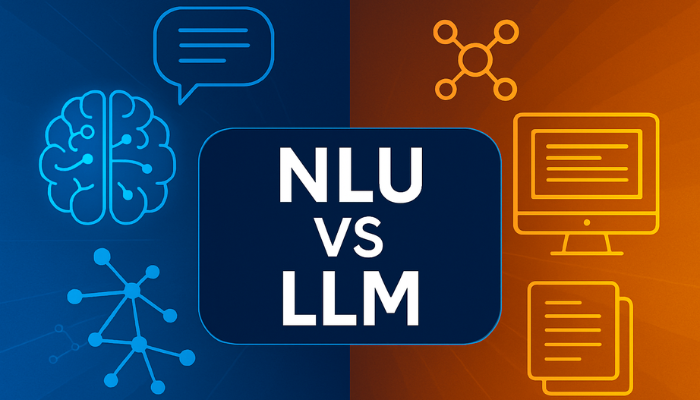As businesses race to improve efficiency, customer experience, and operational agility, Bot as a Service (BaaS) has emerged as a cost-effective, scalable automation model. It allows organisations to deploy AI-driven bots via third-party cloud platforms to handle everything from customer support chats and payment processing to appointment scheduling and data aggregation, without the complexity of building or maintaining their own bots.
This pay-as-you-go model is especially attractive for mid-sized and enterprise businesses aiming to digitise operations quickly, control overheads, and respond to market demands in real time. However, while the operational benefits are clear, BaaS also introduces strategic considerations around data security, system integration, and governance that business leaders can’t afford to overlook.
In this blog, we’ll explain what Bot as a Service (BaaS) is and how it operates within enterprise environments. You’ll learn about the most common business use cases for BaaS solutions, along with the operational advantages and potential risks of adoption.
What is Bot as a Service (BaaS)?
Bot as a Service (BaaS) is a delivery model that allows businesses to access, deploy, and manage software bots through third-party providers, eliminating the need to develop, host, and maintain these automation tools internally. This approach supports rapid automation adoption, enabling organisations to optimise workflows, reduce manual effort, and improve operational efficiency with minimal upfront investment.
Below is a detailed breakdown of how BaaS operates and what business leaders should know when considering it for their organisations.
1. Identifying Automation Needs and Selecting Bot Services
The BaaS journey begins with a clear understanding of the tasks or processes that could benefit from automation, whether it’s customer service chatbots, sales lead qualification, invoice processing, or data extraction.
Businesses then evaluate BaaS providers who offer pre-built bots designed for these specific functions. These providers typically maintain a catalogue or marketplace of bots that cover a broad spectrum of industry use cases. Decision-makers must select bots that align closely with their operational goals, technology stack, and compliance requirements.
2. Customization and Configuration to Fit Business Context
While many bots are available as turnkey solutions, BaaS providers often offer customization capabilities to tailor bots according to company-specific needs. This can include:
- Configuring conversational flows or decision trees in customer service bots
- Integrating bots with internal CRM, ERP, or ticketing systems
- Adjusting bot parameters to comply with data governance and security policies
Customization ensures that the bots not only automate tasks but do so in a way that reflects the company’s brand voice, operational nuances, and compliance framework—critical factors for ensuring seamless adoption and effectiveness.
3. Integration with Existing Systems and Workflows
A core strength of BaaS lies in the ability of bots to work cohesively within a company’s existing IT ecosystem. Providers facilitate this through APIs, webhooks, and connectors that enable bots to interact with enterprise applications such as Salesforce, Microsoft Dynamics, Zendesk, or proprietary software.
This integration capability ensures automation complements, rather than disrupts, current workflows, allowing bots to access relevant data, update records, and trigger downstream processes autonomously. From a leadership perspective, evaluating how easily and securely bots integrate with existing infrastructure is key to successful implementation.
4. Cloud-Based Scalability and Cost Efficiency
BaaS platforms leverage cloud infrastructure to host and operate bots, enabling businesses to scale their automation efforts on demand. Whether handling seasonal spikes in customer inquiries or expanding automation across departments and geographies, cloud scalability means you pay only for what you use, eliminating costly overprovisioning or underutilised resources.
For CFOs, this pay-as-you-go model translates into predictable operational expenses and reduced capital expenditure, making BaaS a financially attractive option compared to in-house bot development or large software licenses.
5. Ongoing Management, Maintenance, and Security
A significant advantage of BaaS is that the provider takes responsibility for bot maintenance, updates, and performance monitoring. This includes adapting to platform upgrades, patching security vulnerabilities, and refining bot intelligence to maintain effectiveness.
However, outsourcing bot management also introduces dependency risks. Business leaders must rigorously assess provider security practices, data handling policies, and compliance certifications (e.g., SOC 2, HIPAA, GDPR) to safeguard sensitive information and ensure regulatory compliance.
Types of Bots Available in BaaS
Bot as a Service (BaaS) platforms offer a variety of bots, each designed to automate specific business functions, reducing manual intervention and improving operational efficiency. Here’s a breakdown of the most common types of bots businesses can utilize:
1. Customer Service Bots
These bots automate customer interactions through chat or voice channels, handling routine queries, troubleshooting, and providing support. For example, a customer service bot can assist users with basic inquiries like order status or technical issues, reducing the load on human agents and enhancing the overall customer experience.
2. Lead Generation Bots
Designed to collect and qualify leads, these bots automate the process of interacting with visitors on a website or social media. They engage users through predefined workflows, gathering essential contact information and qualifying them based on pre-set criteria. For instance, a lead generation bot can assess whether a website visitor is a potential client based on their responses to key questions, and then pass on the qualified lead to the sales team.
3. Data Collection Bots
These bots scrape and gather valuable market or competitor data from various online sources. Businesses can use them to collect pricing information, track competitor activities, or monitor industry trends. For example, a retail business might use data collection bots to track competitor prices for similar products in real time, adjusting their pricing strategy accordingly.
4. Scraping Bots
Scraping bots focus on harvesting large volumes of data, often used for price comparison, market intelligence, or SEO analysis. A common task for scraping bots is to collect product descriptions, pricing information, or other relevant data from e-commerce websites, enabling businesses to stay competitive in their pricing and product offerings.
5. Content Moderation Bots
These bots ensure that user-generated content (UGC) adheres to platform guidelines by automatically identifying and filtering inappropriate material. For example, a social media platform might use content moderation bots to detect hate speech, offensive images, or spam, ensuring a safe and respectful user environment.
As businesses adopt BaaS solutions, they can access these bots to automate a variety of tasks, improving efficiency and driving cost savings. However, while BaaS offers significant advantages, there are also challenges associated with its use.
Benefits of Using Bot as a Service
Bot as a Service (BaaS) offers several compelling benefits that can help businesses optimize operations, reduce costs, and improve overall service quality. Here’s how businesses can benefit from adopting BaaS solutions:
1. Cost Efficiency
BaaS allows businesses to reduce operational costs by automating repetitive and time-consuming tasks. For instance, using bots for customer support or data collection can eliminate the need for a large team to handle these functions, resulting in significant savings.
2. Increased Productivity
By automating routine tasks, BaaS frees up human resources to focus on more strategic and value-added activities. Sales teams can concentrate on closing deals, while customer service teams can handle complex issues that require human intervention.
3. 24/7 Operation
Bots operate around the clock, ensuring that customer queries are handled at any time, regardless of time zones. This continuous availability improves service delivery, especially for global businesses that need to provide constant support to their customers.
4. Scalability
As businesses grow, so too can their use of bots. BaaS platforms provide a scalable solution, allowing businesses to add more bots or expand their functionality based on demand. For example, during peak shopping seasons, e-commerce businesses can quickly scale up their customer service bots to handle a surge in inquiries.
5. Improved Customer Experience
Bots can provide instant responses, ensuring that customers receive timely assistance. With AI-driven bots, businesses can offer personalized service, such as recommending products based on previous browsing history or providing tailored solutions to common problems.
The ability to improve efficiency and productivity is a significant advantage for businesses, but with the growing reliance on bots, there are inherent challenges to consider.
Challenges of Bot as a Service
Bot as a Service (BaaS) offers substantial advantages for businesses looking to automate processes. However, it also introduces several challenges that need to be addressed for effective and secure implementation. Below are the key challenges businesses face when adopting BaaS, along with potential solutions:
1. Security Risks
BaaS platforms, while offering automation benefits, expose businesses to cyber threats like bot-driven DDoS attacks, credential stuffing, and data scraping. Malicious bots can exploit these services to breach security and steal sensitive data.
Solution: To mitigate security risks, businesses should implement multi-layered security measures such as bot detection systems, firewalls, and AI-based fraud prevention tools. Regular monitoring and real-time threat detection can help identify and block malicious activities before they cause damage.
2. Regulatory Concerns
As businesses automate tasks with BaaS, they must ensure compliance with data privacy laws such as GDPR rules. Bots often handle large amounts of personal data, making it critical to avoid regulatory violations.
Solution: Businesses should integrate strong data protection protocols into their bot systems. This includes encrypting sensitive data, ensuring that bots adhere to the principles of data minimization, and implementing mechanisms for transparent data usage that comply with relevant regulations.
3. Quality Control
Bots, while efficient, often lack the personalized touch or accuracy of human agents. This can result in poor customer experiences, particularly when bots fail to handle complex or nuanced tasks.
Solution: To improve quality, businesses should combine bot systems with human oversight. This ensures that bots handle routine tasks, while human agents step in for more complex queries. Regular updates and control for bots can also help them respond more accurately and naturally.
4. Ethical Issues
Bots may be misused for unethical purposes such as spamming, account takeovers, or manipulating digital content. This can result in significant reputational damage and loss of trust from customers.
Solution: Businesses must implement ethical guidelines for bot usage and enforce strict monitoring to detect and prevent malicious bot behavior. Building in transparent logging and activity tracking can help identify unethical activities, ensuring bots are used responsibly.
As businesses continue to adopt BaaS, the security and operational challenges must be addressed. While these solutions can mitigate many risks, the need for proactive protection grows as bot attacks become more sophisticated.
How Businesses Can Safeguard Against Bot Attacks
To effectively combat bot attacks, businesses must deploy advanced and proactive measures to protect their systems and sensitive data. Below are several strategies businesses can adopt to safeguard against malicious bots while using Bot as a Service (BaaS):
1. Implement Advanced Bot Detection Systems
Businesses should invest in bot detection systems that utilize AI and machine learning to distinguish between human and bot traffic. These systems can analyze patterns, behaviors, and device fingerprints to accurately identify bot-driven activities.
2. Use Multi-Layered Security Defenses
A comprehensive security approach that combines multiple layers of defense is essential. This includes firewalls, traffic analysis tools, CAPTCHA or reCAPTCHA systems, and IP blocking. Using these technologies together can reduce the risk of bot-driven attacks significantly.
3. Adopt Behavioral Analytics
By employing behavioral analytics, businesses can monitor user activity for signs of automation. Bots often exhibit patterns that differ from human behaviors, such as consistent speed or repetitive actions. Identifying these behaviors can help businesses detect bot activities in real time.
4. Ensure Regular Security Audits and Updates
Conducting regular security audits and updating bot systems can help businesses stay ahead of evolving threats. With new bot variants emerging, businesses must ensure their defense systems are equipped to handle the latest attack techniques.
5. Integrate Real-Time Threat Intelligence
Real-time threat intelligence provides businesses with up-to-date information on emerging bot threats. This enables quick identification of new attack patterns and the ability to respond promptly. Integrating threat intelligence feeds into bot management systems enhances the overall security posture.
By adopting these strategies, businesses can better protect themselves from the growing threat of bot attacks while still benefiting from the efficiencies offered by BaaS solutions.
Conclusion
To stay ahead of emerging threats, businesses must continuously adapt their cybersecurity strategies. Investing in AI-powered security solutions, real-time threat monitoring, and advanced bot mitigation tools will be critical in countering the evolving landscape of BaaS.
At Codewave, we design and build custom AI-driven bots and intelligent automation solutions tailored to your business workflows, from customer service and sales enablement to internal process automation. Beyond development, we help enterprises implement robust security frameworks to safeguard their systems against malicious Bot-as-a-Service (BaaS) attacks, credential stuffing, and automated fraud.
Whether you need to deploy trusted, compliant bots for operational efficiency or fortify your infrastructure against external bot threats, our AI, ML, and digital transformation services deliver secure, scalable, enterprise-grade solutions.
Looking to protect your business from bot-related risks while driving intelligent automation? Talk to Codewave’s AI security experts today.
Codewave is a UX first design thinking & digital transformation services company, designing & engineering innovative mobile apps, cloud, & edge solutions.







